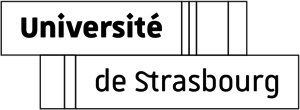Abstract
Dielectric and magnetoelectric (ME) studies were conducted on polycrystalline samples of the molecular spin triangle [Fe3O(O2CPh)6(py)3]ClO4·py (Fe3) and on its diamagnetic isostructural GaIII analogue (Ga3). Dielectric studies revealed a thermally activated process between approximately 15–60 K, attributed to the freezing-unfreezing of the crystallographically disordered pyridine solvates, with a paraelectric behavior above ∼68 K. Magnetoelectric studies revealed a second-order ME effect for Fe3, which remained significant above liquid-nitrogen temperatures. Similar experiments on Ga3 allowed to control for the instrumental baseline response and to confirm the origin of the signal as the ME effect of Fe3. The thermal evolution of the ME coupling coefficient (αME) showed no discontinuities around the temperature of the freezing–unfreezing processes, indicating that it is unrelated to them. These latter are assigned the disordered-diamagnetic sublattice consisting of the pyridine solvates and perchlorate counteranions. In turn, the ME coupling is assigned to the ordered-magnetic sublattice consisting of the Fe3 trinuclear cations. These results demonstrate that Fe3 can directly transform magnetic perturbations to electric signals at the single-molecule level, without the need of structural transformations or long-range magnetic ordering.
Reference
Electrical Detection of Magnetic Perturbations through the Magnetoelectric Effect of a Molecular Spin Triangle
Balwant Singh Chauhan, Ratnamala Chatterjee, Philippe Turek, and Athanassios K. Boudalis
Journal of the American Chemical Society, First published: 27 May 2025 – DOI : https://doi.org/10.1021/jacs.5c05601
Contacts
Philippe Turek & Athanassios K. Boudalis, team POMAM, Institut de Chimie de Strasbourg, UMR7177.





